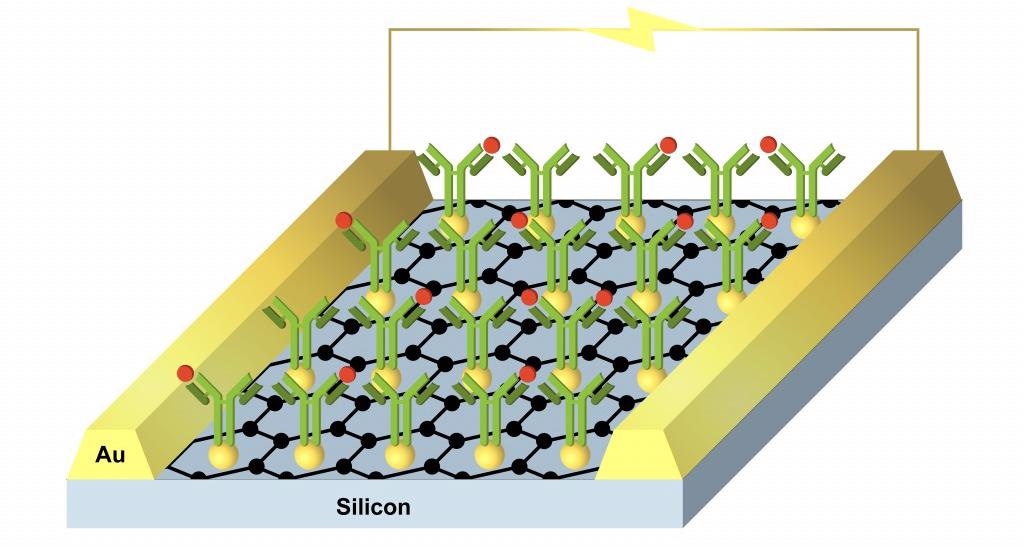A biosensor is an analytical device that is usually utilized in the detection of one or more chemical substances. Biosensors combine a biological component with a physicochemical conductor. They are generally comprised of three parts; a sensor, a transducer and a range of associated electrons.
Biosensor chips are made up of an array of distinct biosensors. These biosensors can be individually monitored and employed in the analysis of various analytes. The analyte interacts with the bioreceptor, producing an effect that is recorded by the transducer.
The transducer translates this information into a measurable effect, for example, an electrical signal. Biosensors and biochips are generally classified by their specific bioreceptor or their transducer type.

Image Credit: Platypus Technologies, LLC
Three generations of biosensors are currently available on the market.
- The first type sees reaction of the product dispersed to the sensor, creating an electrical reaction.
- The second type sees the sensor employ specific mediators between the sensor and the response in order to prompt an optimal response.
- The third type sees the response cause the reaction without a mediator being directly involved.
Ongoing advancements in the field of biosensors have resulted in the development of biosensors able to accommodate full-scale diagnosis on microchips and bedside diagnostics. This has also led to an overall reduction in cost and more rapid diagnostics.
Silicon Biosensor Chips
Square chips of silicon are convenient and easy to use. Polished silicon is smooth, facilitating high resolution imaging for SEM and AFM applications.
Silicon Biosensor Chips Coated with Metals or Silica
Certain silicon chips are coated with platinum (Pt) or gold (Au). These are >99.99% pure metals, with gold especially offering high conductivity and a transparent substrate that enables optical imaging of the sensing layer.
Electronic Biosensor Chips
Molecular electronic sensor chips work by integrating single molecules as electrical sensor elements on standard semiconductor chips. This approach allows electronic biosensor devices to be highly scalable.
Over time, electronic biosensor chips have become increasingly prevalent in a range of testing areas including DNA sequencing.
Graphene Biosensor Chips
Graphene is a flexible two-dimensional form of graphite that was discovered in 2004. Since its discovery, researchers around the world have worked to produce commercially scalable applications suitable for this high-performance material.
Graphene is between 100 and 300 times stronger than steel while simultaneously offering maximum electrical current density that is orders of magnitude greater than that of copper.
Graphene is the thinnest, strongest, and most reliably electrically conductive material in the world, making it an exceptionally promising material for use in biosensor chips in electronic devices such as computers.
Carbon Nanotube Chips
Scientists were recently able to develop the world’s largest computer chip made from carbon nanotubes. The chip can conduct electricity at super-fast speeds, and researchers are looking to utilize carbon nanotubes in future computers due to their ability to conduct electricity rapidly and more efficiently than silicon.
Applications of Biosensor Chips
Biosensor chips are ideal for monitoring and managing ecological pollution in food and agriculture. Biosensor chips may also be utilized in wearable technology such as smartwatches, allowing them to monitor oxygen saturation and heart rates.
Platypus Technologies has a considerable amount of knowledge, experience and expertise in the field of chemical and biosensor chips.

This information has been sourced, reviewed and adapted from materials provided by Platypus Technologies, LLC.
For more information on this source, please visit Platypus Technologies, LLC.